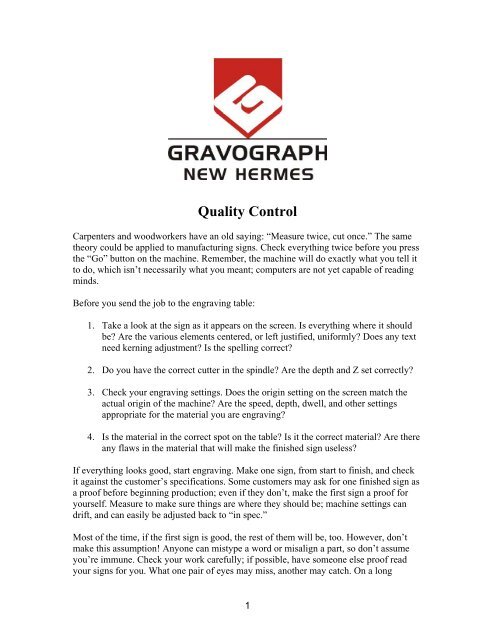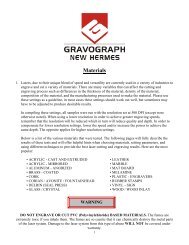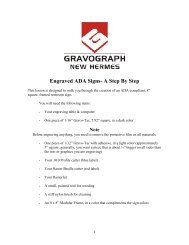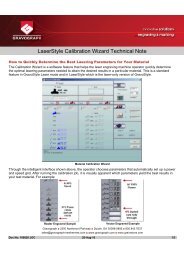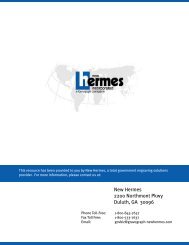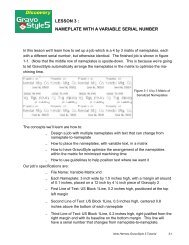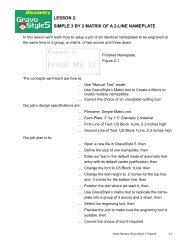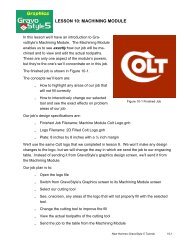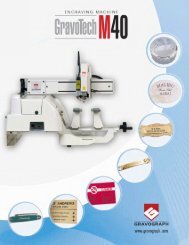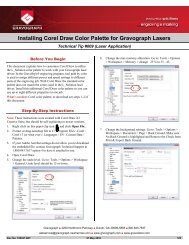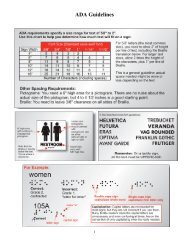How to ensure engraving quality - Gravograph-New Hermes
How to ensure engraving quality - Gravograph-New Hermes
How to ensure engraving quality - Gravograph-New Hermes
You also want an ePaper? Increase the reach of your titles
YUMPU automatically turns print PDFs into web optimized ePapers that Google loves.
Quality Control<br />
Carpenters and woodworkers have an old saying: “Measure twice, cut once.” The same<br />
theory could be applied <strong>to</strong> manufacturing signs. Check everything twice before you press<br />
the “Go” but<strong>to</strong>n on the machine. Remember, the machine will do exactly what you tell it<br />
<strong>to</strong> do, which isn’t necessarily what you meant; computers are not yet capable of reading<br />
minds.<br />
Before you send the job <strong>to</strong> the <strong>engraving</strong> table:<br />
1. Take a look at the sign as it appears on the screen. Is everything where it should<br />
be Are the various elements centered, or left justified, uniformly Does any text<br />
need kerning adjustment Is the spelling correct<br />
2. Do you have the correct cutter in the spindle Are the depth and Z set correctly<br />
3. Check your <strong>engraving</strong> settings. Does the origin setting on the screen match the<br />
actual origin of the machine Are the speed, depth, dwell, and other settings<br />
appropriate for the material you are <strong>engraving</strong><br />
4. Is the material in the correct spot on the table Is it the correct material Are there<br />
any flaws in the material that will make the finished sign useless<br />
If everything looks good, start <strong>engraving</strong>. Make one sign, from start <strong>to</strong> finish, and check<br />
it against the cus<strong>to</strong>mer’s specifications. Some cus<strong>to</strong>mers may ask for one finished sign as<br />
a proof before beginning production; even if they don’t, make the first sign a proof for<br />
yourself. Measure <strong>to</strong> make sure things are where they should be; machine settings can<br />
drift, and can easily be adjusted back <strong>to</strong> “in spec.”<br />
Most of the time, if the first sign is good, the rest of them will be, <strong>to</strong>o. <strong>How</strong>ever, don’t<br />
make this assumption! Anyone can mistype a word or misalign a part, so don’t assume<br />
you’re immune. Check your work carefully; if possible, have someone else proof read<br />
your signs for you. What one pair of eyes may miss, another may catch. On a long<br />
1


